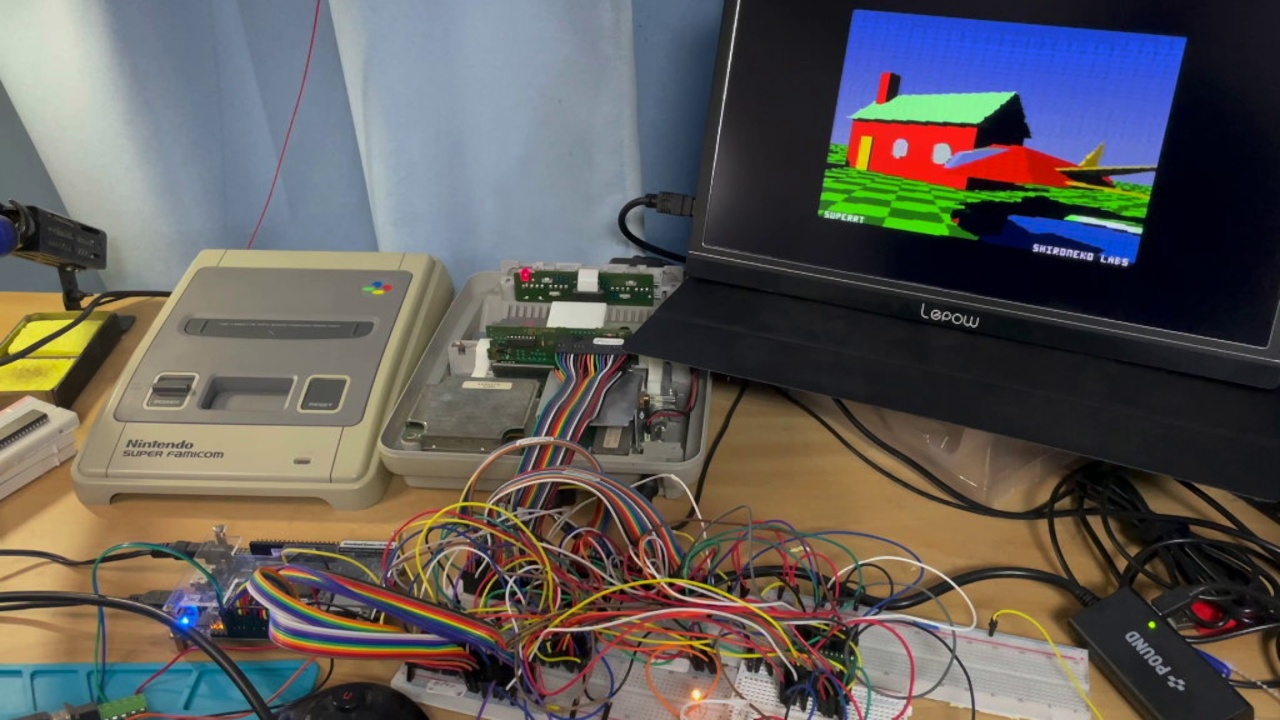In 1990 the Super Nintendo Entertainment System, or SNES for short, called Super Famicom in Japan, saw the light of day. Real-time ray tracing in games was unthinkable 30 years ago; even 3D graphics were still at the very beginning of their development.
Still it is possible Ray tracing can also be displayed via the 16-bit console. Software developer Ben Carter, who has worked on the game series Harry Potter, Burnout and Star Fox, shows how this works:
Link to YouTube content
The highlight: The Super Nintendo itself is not modified at all. It only takes on part of the calculations and outsources the complex ray tracing calculations to a so-called FPGA (Field Programmable Gate Array).
Carter said he was inspired by the Super FX coprocessor. This was installed as an additional chip in game modules (cartridges) in order to accelerate the two PPU chips (Picture Processing Units) of the SNES with a view to 3D graphics. The technology is used in the shooting game Star Fox, which was released in 1993.
In the video embedded above, Carter explains exactly how ray tracing works on the Super Nintendo. You can also find the details on the Homepage Shironekolabs.com
You can find out from the colleagues at GamePro that consoles are not only good for playing games, but also for keeping chickens warm:
more on the subject
KFC brings its own console
Summarized: Like the Super FX chip, the SuperRT chip is connected to the SNES via a cartridge. According to Carter, the coprocessor is exclusively responsible for ray tracing and does not take on any rasterization tasks – the SNES is at the wheel, they say.
In addition, the coprocessor is limited to what was technically possible in the early 1990s, which is why implementation should have been theoretically possible even then.
Does ray tracing work with games?
Carter does not comment on this, but in view of the technical implementation, games would have to be specially modified and the corresponding modules provided with a SuperRT chip. As long as nobody takes the trouble to adapt individual titles accordingly, it remains a very interesting technical gimmick.
Would you prefer to play on a modern console? In our conclusion video we tell you how we think about the Xbox Series X.
8:09
The Xbox Series X in less than ten minutes – our final video on feel, performance, volume & more
You can find more information about the current consoles and their games on our sister site GamePro.










